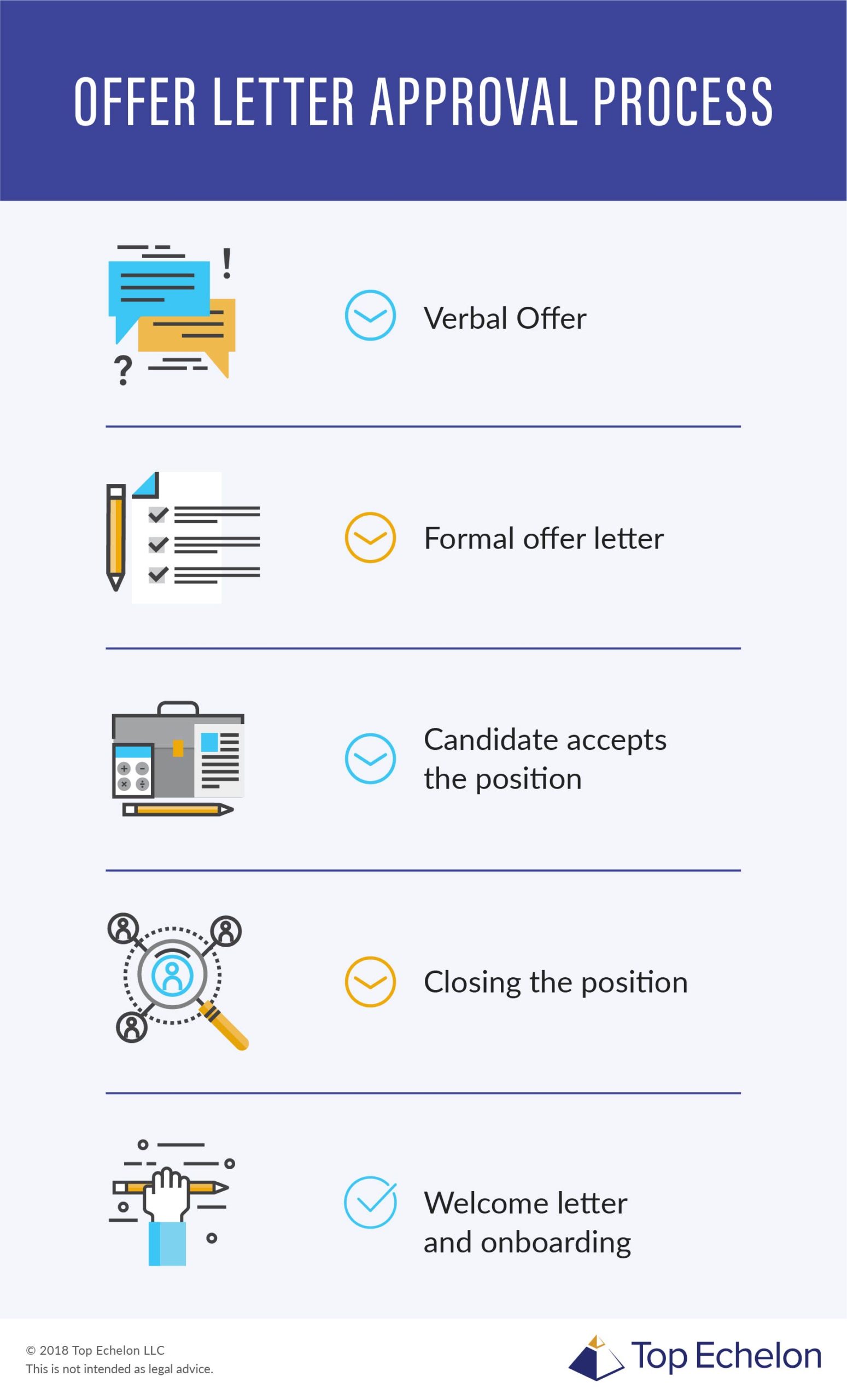It’s always great when you or your client finds a candidate who is a good fit for a position. When you find and offer the candidate the job, you must go through an offer letter approval process. what steps should you take during an offer letter approval process?
Offer letter approval process
As a recruiter, you or your client should follow an offer procedure when extending a job position to a candidate. The steps in the offer letter approval process may vary depending on the position, candidate, and type of business.
Check out the steps to follow during the offer approval process below.
Verbal offer
Although it’s not required, some clients might prefer you give a candidate a verbal job offer before sending the formal offer letter. A verbal offer serves as a preliminary way of informing the candidate of your client’s selection, benefits, and next steps.
Verbal offers consist of you or your client calling or potentially meeting with the chosen candidate face-to-face to discuss the offer. The conversation typically includes discussing the salary amount, job grade level, start date, and any benefits available to the candidate (e.g., medical or dental).
Treat verbal offers just like written job offers. Your verbal offer may be legally binding and enforceable when the candidate accepts it.
Be sure to discuss additional requirements during the verbal job offer. A verbal job offer may be contingent on whether the candidate still needs to pass pre-employment tests (e.g., background checks and drug tests).
Formal offer letter
The main step of your offer letter procedure includes extending a formal offer letter.
Include information such as the job title, description, compensation, terms and conditions, candidate’s name, and date in the formal job offer. Send the candidate their official offer via email for them to review and sign.
Give the candidate a time frame or specific date for when you need the offer letter back (e.g., one week after).
Candidate accepts position
An essential part of the offer process is the candidate accepting the formal offer letter. If a candidate accepts the formal offer, they must send you or your client the signed offer letter agreeing to the position and terms. If the candidate is declining a job offer, then you may need to restart the hiring and recruitment process.
Depending on the client, the candidate might need to go through a screening process after you send the offer letter. If so, make sure to email the candidate to let them know of the next steps for any necessary screenings (e.g., background checks).
Store candidates’ signed offer letters and files in your recruiting software.
Closing the position
After the candidate passes any required screenings and officially accepts the position, you or your client can close or remove the posted position from online job boards, your client’s website, and anywhere else listing the position as available.
Welcome letter and onboarding
When the candidate is ready to start onboarding, you or your client may choose to send a welcome letter to the candidate.
A welcome letter depends on the client’s preference and is entirely optional, but it adds more of a personal touch to the onboarding process.
The client must continue the onboarding process steps by having the candidate complete their employee paperwork and new hire forms.
Importance of the offer letter approval process
Even though the offer process in recruitment may seem basic, it is necessary. Creating your own offer letter approval process might help you or your client stay organized, onboard a candidate more quickly, and set the tone for the ongoing relationship between the future employee and client.









